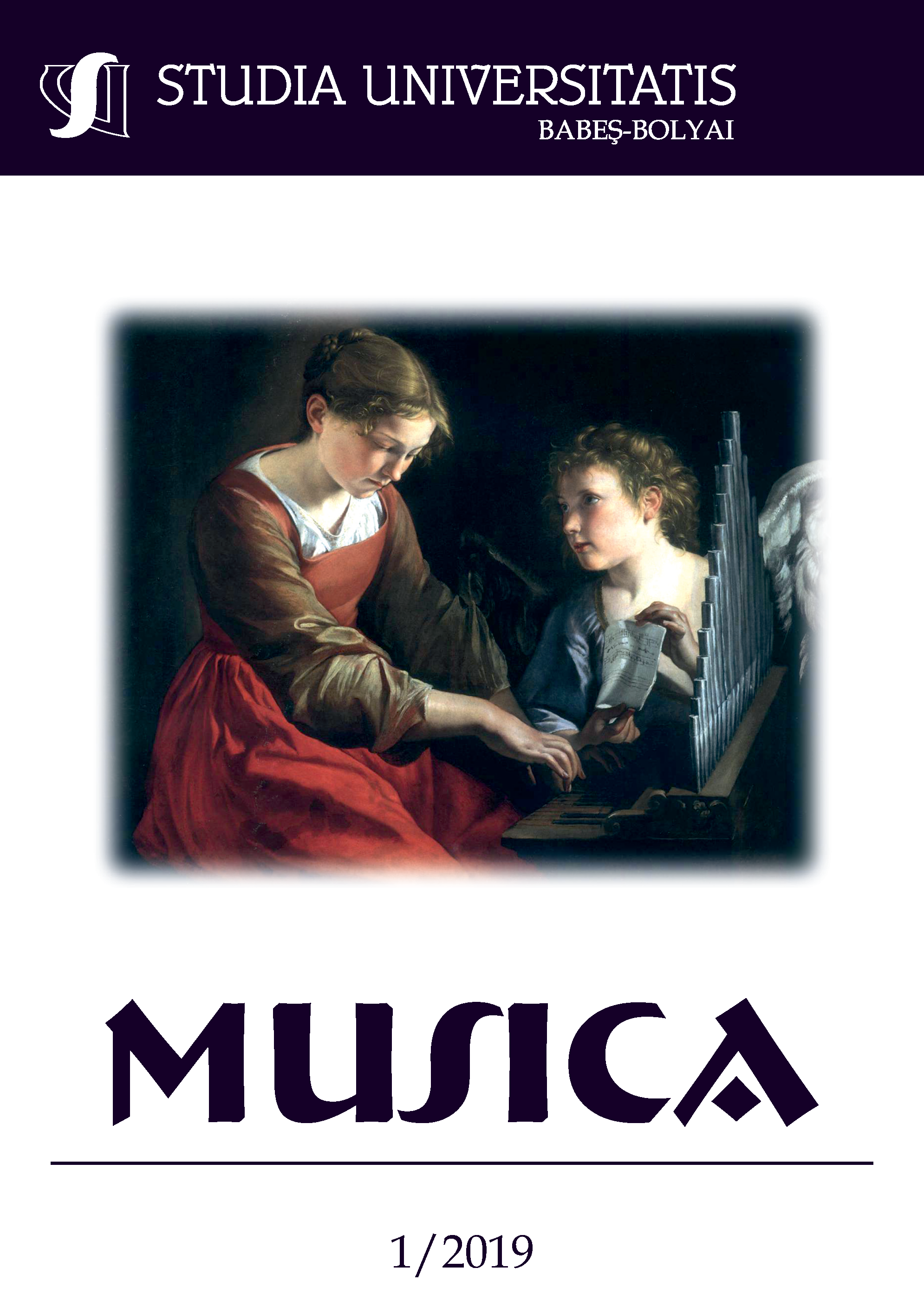SÁNDOR VERESS: FADING INTO OBLIVION
DOI:
https://doi.org/10.24193/subbmusica.2019.1.14Keywords:
Veress, Bartók, Kodály, Ligeti, Kurtág, threnos, folklore, dodecaphonic system.Abstract
The composers of the 20th century bring several innovations, resulting in a multitude of new musical movements, which will make this period to be the most intense and prolific era in all of music history. The representatives of the Hungarian School of composition is made up of Jenő Hubay, Ernő Dohnányi, Béla Bartók and Zoltán Kodály, and those who follow the footsteps of the new generation of Hungarian composers, later becoming some of the most famous and appreciated creators of their time, namely György Ligeti and György Kurtág. The present study will reflect upon the music of the 20th century and a creator of outstanding importance. Sándor Veress shaped and influenced many generations of composers and has continued the legacy of Bartók and Kodály in his own style. The three sections of the study will approach important biographical data of composer Sándor Veress, noting a few representative works from his oeuvre. The subchapter dedicated to his compositional style will broach upon the topic of the composition techniques used by the Hungarian creator, revealing both his sources of inspiration, as well as his ideas, his conceptual approach.References
Benkő, András, Terényi Ede, Laudatio musicae, in Zenetudományi írások (Musicology papers), Kriterion Könyvkiadó, Bukarest, 1983, pp. 74-84.
Berlász, Melinda 2000, Tradíció és jelen szintézise Veress Sándor ‘Passacaglia concertantéjában’: Utószó Veress kompozíciójának koncertelőadásához (The Synthesis of Tradition and Present in Sándor Veress’ “Passacaglia concertante”: Afterword to the Concert of Veress’ work), Magyar zene, nr. 38, 200, pp. 117-126.
Berlász, Melinda - Demény, János - Terényi, Ede, Veress Sándor, Zeneműkiadó, Budapest, 1982.
Berlász, Melinda, Sándor Veress’s Image of Kodály: A Bilateral, Authentic Testimony. The historical role in the Kodály-literature of Veress’s writings on Kodály, Studia Musicologica Academiae Scientiarum Hungaricae, nr. 46, 2004, pp. 295-324.
Berlász, Melinda, Veress Sándor egyetlen corále tétele (The Only Chorale Movement by Sándor Veress), in. Márta Sz.-Farkas (ed.): Szabolcsi Bence emlékére: Születésének 100. évfordulója alkalmából (In Memoriam Bence Szabolcsi: On the Occasion of the 100 Year Anniversary of His Birth), Budapest, 2000, pp. 169-182.
Moldován, Domokos, Tisztelet Kurtágy Györgynek (Hommage to György Kurtág), Editura Rózsavölgyi és Társa, Budapesta, 2006.
Szomory, György, Kis magyar zenetörténet (A Brief History of Hungarian Music), Editura Holnap, Budapesta, 2017.
WEB RESOURCES:
http://epa.oszk.hu/00800/00835/00112/2337.html
http://epa.oszk.hu/02500/02557/00014/pdf/EPA02557_magyar_zene_2013_02_154-208.pdf
http://figaro.reblog.hu/mozart-melankolikus-charme-ja
http://musicianswho.hu/mw2015!/2008/12/15/veress-sandordijak-2008/
https://www.paul-sacher-stiftung.ch/en/collections/u-z/sandor-veress.html
http://www.szegedilap.hu/cikkek/zene-tortenes/hegedus-bernadett--20-eve-hunyt-el-veress-sandor.html
Downloads
Published
How to Cite
Issue
Section
License
Copyright (c) 2019 Studia Universitatis Babeș-Bolyai Musica

This work is licensed under a Creative Commons Attribution-NonCommercial-NoDerivatives 4.0 International License.



